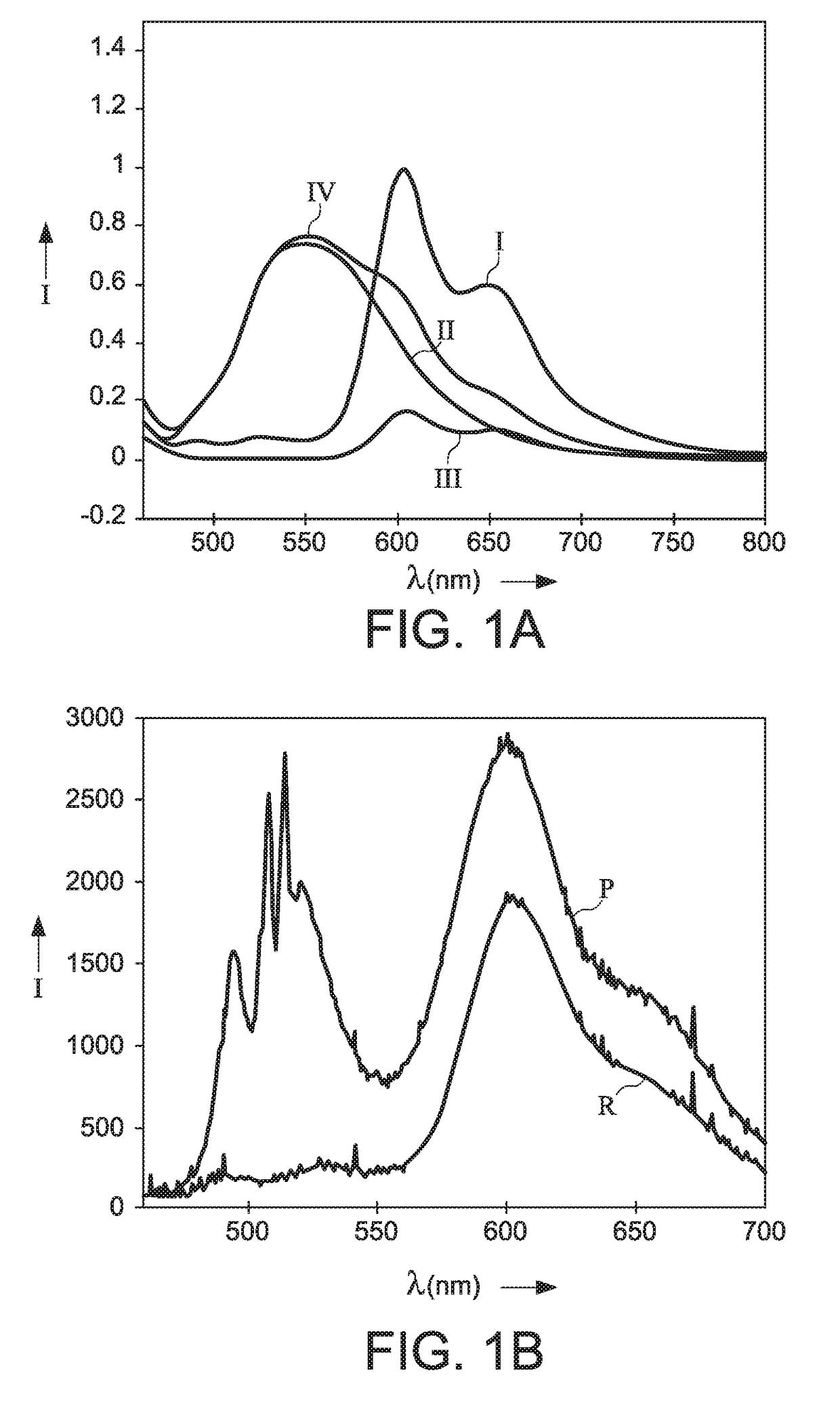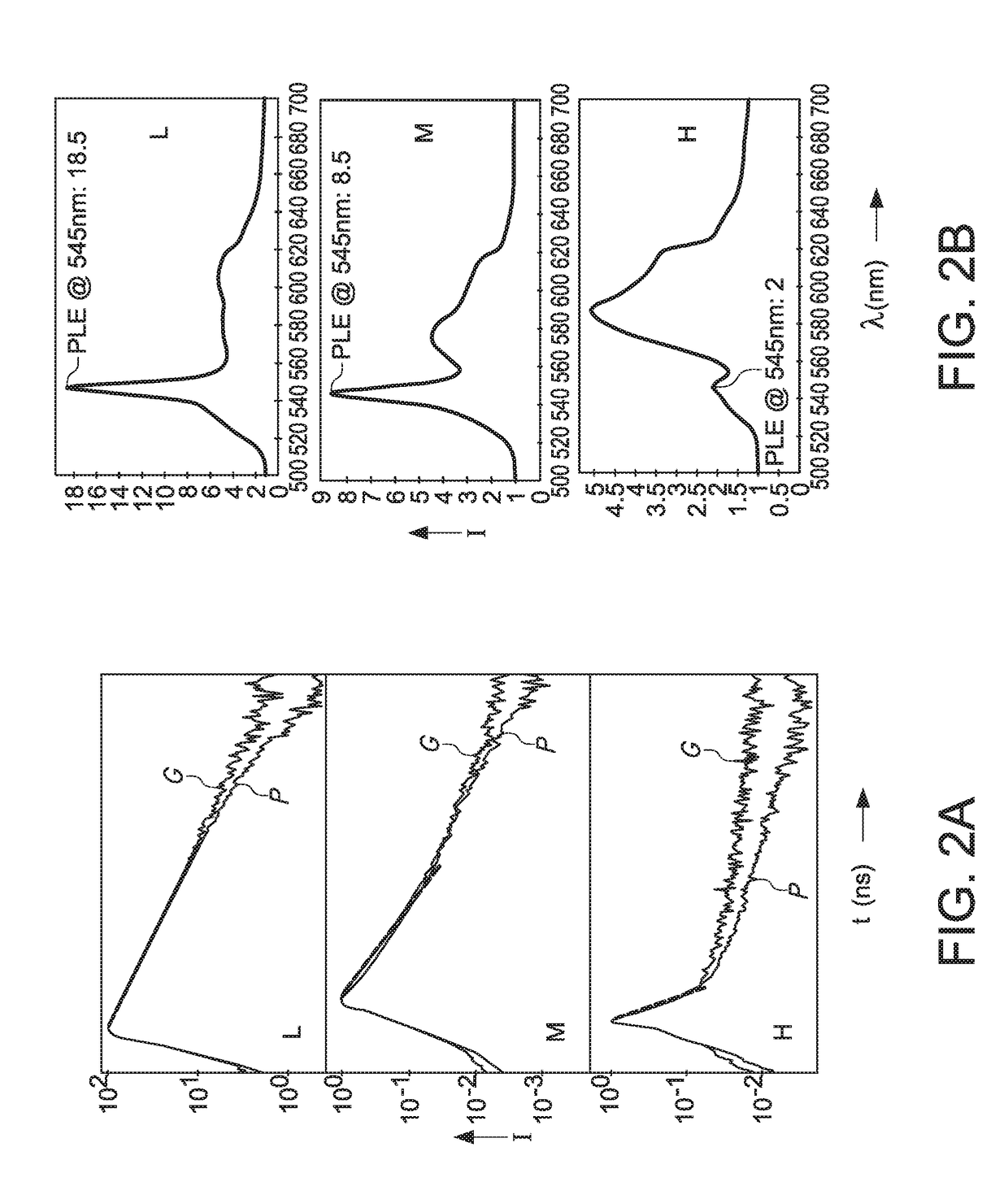Plasmonic white light source based on fret coupled emitters
a plasmonic white light source and emitter technology, applied in the field of lighting devices, can solve the problems of minor enhancement of acceptor emission, difficult to make a single white light emitting plasmonic led device, and use only a fret coupled donor-acceptor system to generate white light, etc., to achieve easy integration, high energy, and easy to absorb energy
- Summary
- Abstract
- Description
- Claims
- Application Information
AI Technical Summary
Benefits of technology
Problems solved by technology
Method used
Image
Examples
Embodiment Construction
[0070]FIGS. 1A and 1B show (a) emission spectra of pure donor (II), pure acceptor (III), mixed donor+acceptor (I) as well as the sum of the pure donor and pure acceptor spectra (IV). The mixed donor+acceptor spectrum is normalized and the other spectra are scaled accordingly (FIG. 1A) and (b) Emission spectra of the mix shown in (a) on glass as reference (R (reference)) and on a square plasmonic array (P (plasmonic sample)). The spectra are recorded at 0° to the angle normal for p-polarization (FIG. 1B). The x-axis displays the wavelength in nm and the y-axis the relative intensity in counts.
[0071]It was found that a mixed film of donor and acceptor phosphors on top of a square plasmonic nanoparticle array, the FRET rate and efficiency were almost not influenced by the plasmonics. This can be seen in the non-changing short donor decay in the mix on glass-reference as well as on plasmonics at a particular acceptor concentration, highlighted by the red dashed line in each of the three...
PUM
| Property | Measurement | Unit |
|---|---|---|
| wavelength | aaaaa | aaaaa |
| wavelength | aaaaa | aaaaa |
| height | aaaaa | aaaaa |
Abstract
Description
Claims
Application Information
 Login to View More
Login to View More - R&D
- Intellectual Property
- Life Sciences
- Materials
- Tech Scout
- Unparalleled Data Quality
- Higher Quality Content
- 60% Fewer Hallucinations
Browse by: Latest US Patents, China's latest patents, Technical Efficacy Thesaurus, Application Domain, Technology Topic, Popular Technical Reports.
© 2025 PatSnap. All rights reserved.Legal|Privacy policy|Modern Slavery Act Transparency Statement|Sitemap|About US| Contact US: help@patsnap.com



